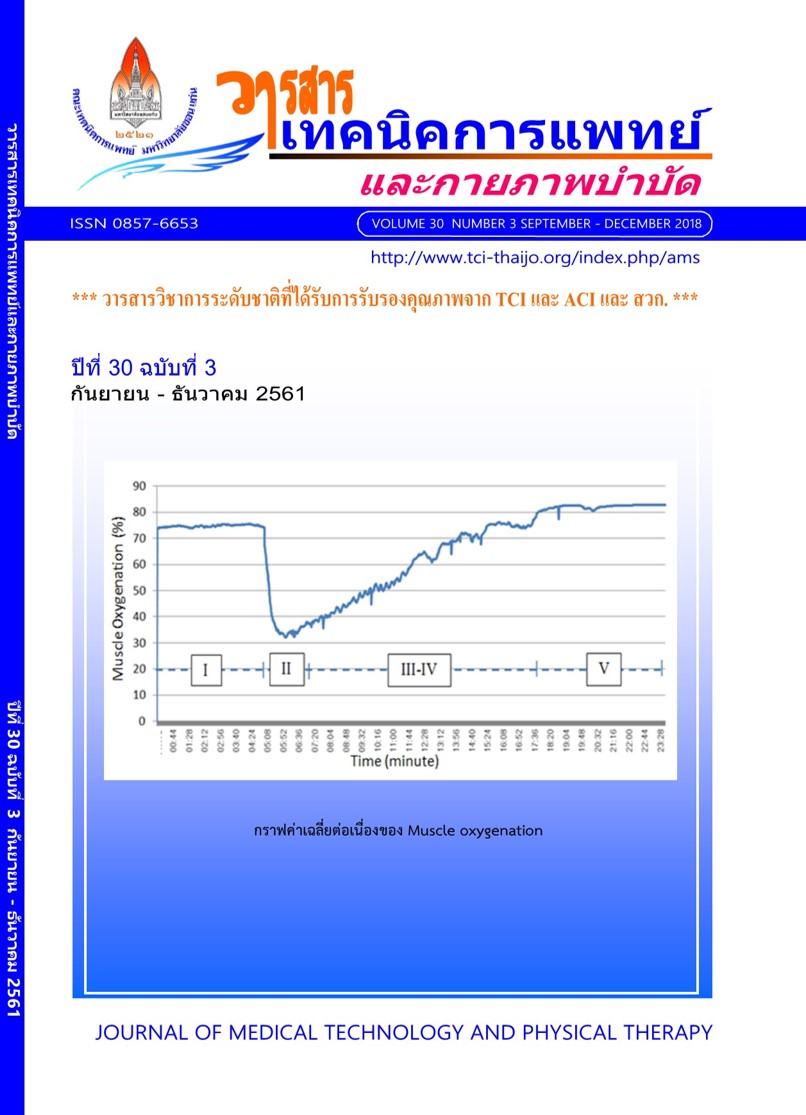Interval rest period and different-testing positions on hand-grip strength measurement among young adults
Main Article Content
Abstract
Hand-grip strength is measure of muscle strength in a simple and not complicated. Previously, the many of study in position and rest period between perform were different. This study aimed to investigate the appropriate position and time rest between sets for high performance in hand-grip strength test. The 60 participants aged between 18-28 years have divided into two groups (30 participants each with equal number of gender). The protocol consisted of 4 methods: sitting and standing on 30 seconds and 1 minute rest period performed by their dominant hand using handgrip dynamometer. Data were analyzed using one sample t-test for comparison of maximum force from all protocols within group, and using One way analysis of variance (1-way ANOVA) to analyzed hand-grip strength between 4 protocols. Results show, male participants performed maximum force for 31.86 kg. with 0.42 kg. of mean difference between trials in the standing and 1-minute rest period. While the female group performed maximum force for 22.05 kg. and 0.25 kg. of mean difference in the sitting and rest period for 1 minute. Therefore, standing position with rest period for 1 minute is appropriate position on hand-grip strength measurement for male and a sitting with 1-minute rest period is suitable in young adult women.

